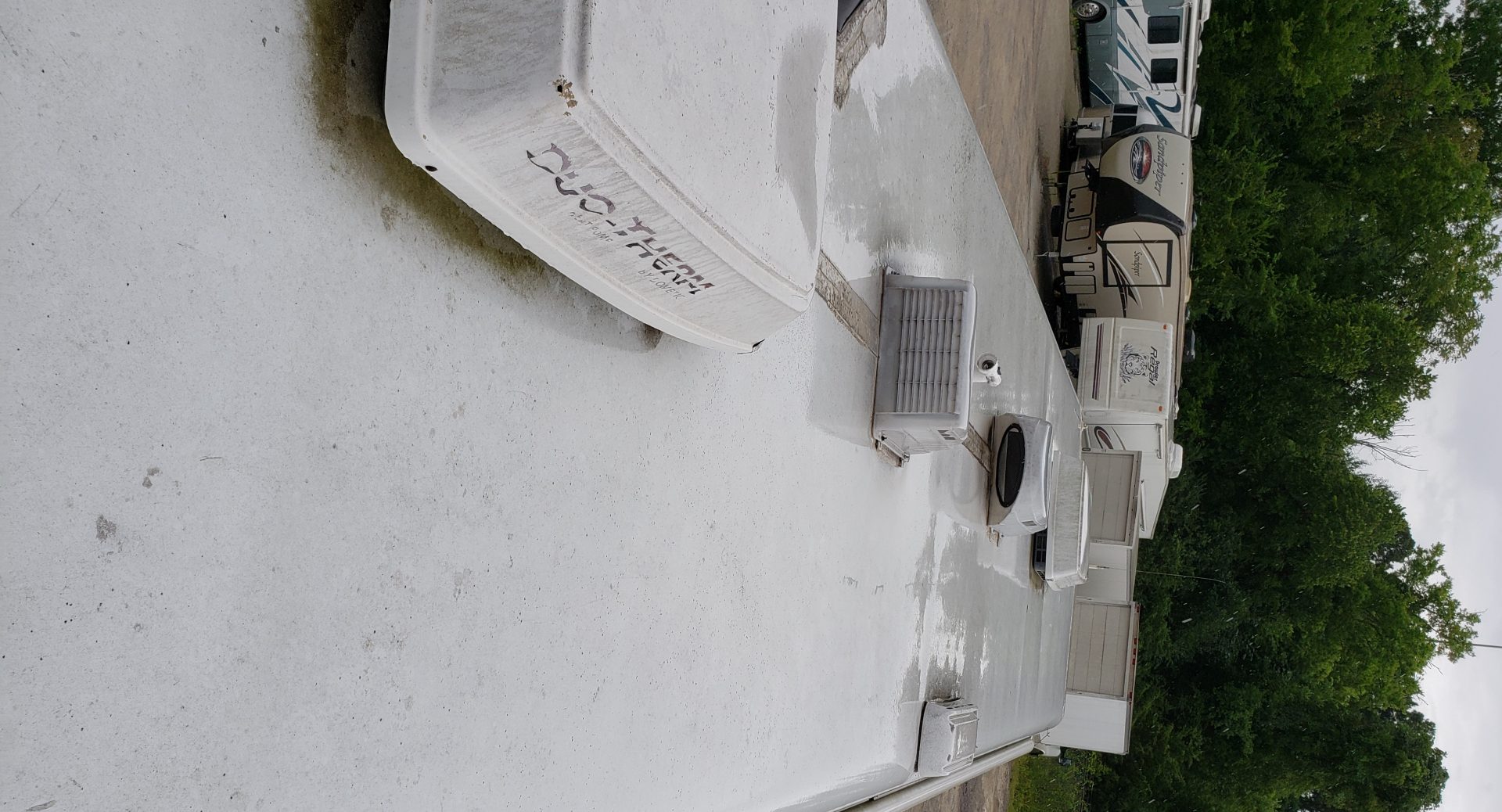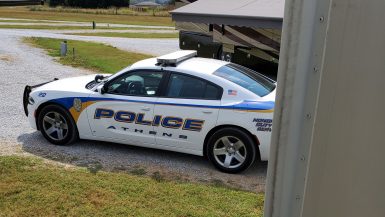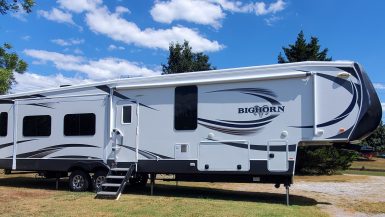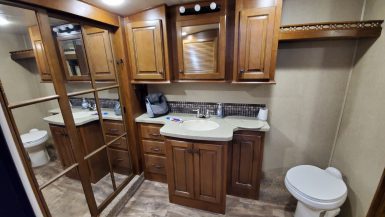Buying a used RV is no easy task. There’s much to be wary of when buying a used RV. You’d think that you could just talk to the current owners, have them send you some pictures or even video and you’d have a good idea of what you are looking at.
You’d still want to view it in person before buying, or have someone else do so, but you should be able to rule out the major issues. SHOULD.
Sadly, that’s not the case. And, every rig you look at when you are a new buyer starting out is just another brick in the learning process. At least it was for us.
Here are just a few things that we couldn’t discover without seeing the rigs.
1 . Soft floors
We found the cutest (according to the pictures) remodeled Class A. We were in love with this thing and according to the sales person (it was being sold by a dealership) the only issue it had was with the speedometer. So, we made the two-hour drive to take a look.
As soon as I walked in, I noped out. Brandon kept looking a little more (trying to justify the drive) but I was instantly taken aback by how this thing did not live up to the pictures. Worse than that, though, was that before I even got fully into the kitchen I noticed soft spots in the floor.
If the floor has soft spots or if you notice dark spots in the linoleum, that’s a VERY bad sign that the flooring has rotted out. And, that’s a sign that there’s been some major leaks. There’s a good chance that floor wasn’t the only thing rotted in that rig. And, looking around we did notice some signs of other leaks throughout.
2 . Bad Smells
No video walk-through or owner will tell you about bad smells in a rig. It’s something you will have to discover for yourself.
Sometimes the smells may be no big deal, pets, cooking, and even smoking leave smells behind. When a rig has been lived in (just like a house) it will pick up the smells of the occupants. And, most of the time that can be remedied with some good thorough cleaning and airing out.
However, bad smells can be a sign of much bigger problems. And, sometimes those smells may be hiding bigger problems.
We walked into one rig and were instantly overwhelmed with cooking / food smells. This rig smelled like a restaurant kitchen – or worse, like someone’s clothes after they have been working in a restaurant kitchen for a week. I knew the people selling this rig own a restaurant so we could chock the smell up to that. And, I figured a good cleaning (which the rig very much needed) would eliminate that smell.
The bigger problem was that back around the bathroom area mixed with the restaurant smell was the smell of mold/mildew. This concerned me in that I wondered how much stronger that smell would be if the food smells weren’t masking it. And, in turn, just how deep that smell went and what was causing it. The fact that this rig also showed some minor delamination just added to our concerns.
After driving two+ hours to view this rig, we once again drove home empty-handed.
3. Delamination
The fiberglass outer of your rig is typically adhered to the Styrofoam insulation board in the walls of your RV. However, impacts to the RV as well as leaks can cause damage to the insulation and to the seal. This causes the adhesive between the fiberglass and the insulation to break down.
While this may start off as just a small air pocket, it won’t get better. Generally, these air pockets grow and water can get trapped within them, causing larger problems throughout the rig.
The problem is that delamination doesn’t get better, and often it gets much worse before an owner even knows about it. While delamination can be repaired it’s costly. And, worse is the potential of other issues that may have been caused by the delamination.
According to RVLife.com ” If you’re just browsing the market for a used fiberglass RV, now’s your chance to run. You do not want to own a RV with delaminated sidewalls, even if the owner is giving it away for free. “
That’s the advice that we chose to take. Given that we encountered this delamination in the same vehicle as the mold/mildew smell, we decided that we this rig was under-priced for a reason. We turned around and headed the 2+ hours back home.
4 . I don’t know what that does / We just do XYZ
I get it, if you aren’t the original owner you aren’t going to know what every button does, or how to operate every little thing. But, you should be able to show me the basics.
I’m totally good with doing a little research on my own. But, I do want to see the current working order of a rig before I buy it. When doing a walk-through with a current owner I don’t want to repeatedly hear “I don’t know how to …” or “I don’t know, we just manage by doing ….” Because what that tells me is that something isn’t working right and you either don’t know what it is, or figured out it can’t be fixed.
Along the same line, when buying from a dealer, make sure they can answer the basic questions. Where did this unit come from (was it purchased at auction or traded in? How many previous owners? What engine/transmission does it have (if it’s drivable)? How old are the tires? The batteries?
When buying used, you are going to inherit someone else’s problems. There’s no way around it, but you can do your best to make sure you know what problems you are inheriting. If everything else is good and there are just a few of these types of issues, a good RV inspection can calm your fears. However, if you are dealing with these on top of other issues, this just might be breaking point.
As someone who is brand new to RVing, you want all the help you can get getting started. The more we looked the more we realized we didn’t know. And, the more we wanted to feel confident that all our questions were answered before we bought. So, when we viewed a rig (whether private sale or dealership) we wanted to make sure that any questions we had were answered prior to the sale – whether by the seller, or through our research.
There are some things you can do to help you during your buying journey.
- Look at a lot of rigs. Look at old and new, and don’t be afraid to ask questions. Until you are pretty sure about what you want, don’t waste time looking at private sale rigs, but do spend time at the dealerships. Most dealerships are great for answering questions. And, you’ll learn quickly which dealerships you don’t want to deal with if they aren’t willing or can’t answer questions.
- Research. Get online and really research the rigs you are interested in. Just type the model into Google and see what comes up. You’ll find reviews, discussions, owner manuals, and even sales brochures that can often help you answer a lot of questions you may have.
- Call before you drive. Before you decide to hop in the car and drive a distance to view a rig you are interested in, call and talk to the owner/sales person. You can often learn a lot by just asking questions and listening – even if all you learn is how little the salesperson knows. Don’t be afraid to ask too many questions. If they get frustrated with you, you probably don’t want to buy from them.
- Phone a friend. If the rig is too far away for you to easily take a look at, see if a friend can take a look for you. If you don’t know someone in the area you may find someone on an online RV group you belong to willing to take a cursory look for you to rule out obvious issues before you make the drive or call in a pro.
- Get an inspection. Don’t rely on your a sales person or current owner to know all or to be honest, and don’t rely on your eyes and knowledge. If you are serious about a rig get an inspection by a Certified RV inspector. They will go over every aspect of the rig and give you a full report.
Even with all of that, there were things we didn’t know about our rig when we bought it (or things we thought we knew but we were wrong). Even with an inspection, we found out after purchasing that the rear A/C wasn’t working well, that the A/C vents had likely not ever been cleaned or the systems ever touched.






Leave a reply